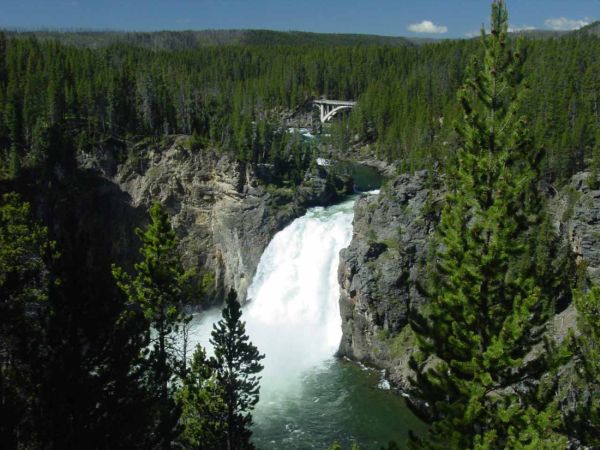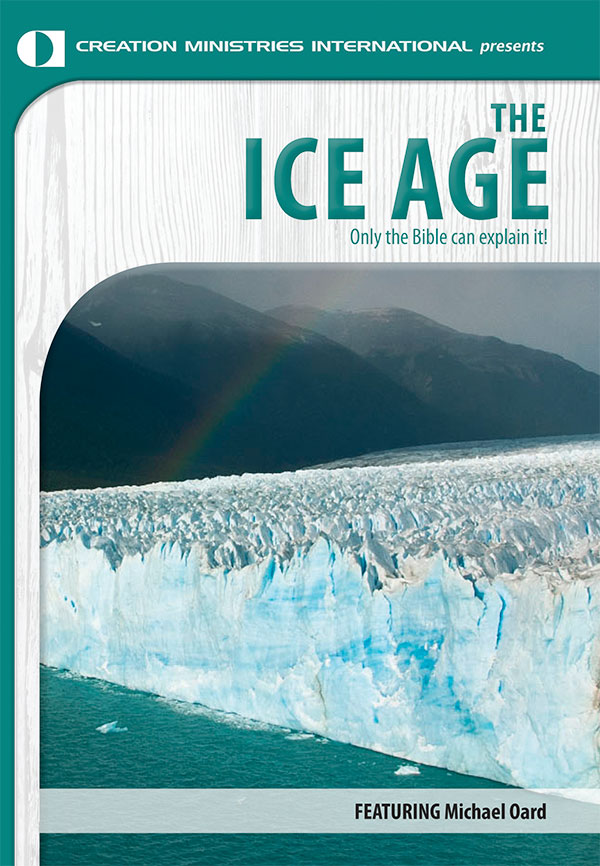Journal of Creation 33(2):16–17, August 2019
Browse our latest digital issue Subscribe
Waterfall formation may not need tectonics or climate change

Secular scientists make many assumptions about nature that lead to conclusions that contradict the Bible’s history. For example, they once assumed that clay particles settle very slowly according to Stokes Law, which means that the claystone and mudrock in the sedimentary rock record, which make up over 50% of the sedimentary rocks, would take millions of years to form.1 However, scientists have discovered that clay particles coagulate into floccules, called flocculation, which is a very common process in nature. This means the clay particles would have deposited much faster,2-5 and that there is no problem with the biblical timescale. Another assumed belief recently challenged is that waterfalls are the result of past tectonics or climate change.6
Origin of many waterfalls unknown
A knickpoint is a discrete steep reach (section) of a stream or river, while a knickzone is an oversteepened channel segment of a stream or river and may consist of a series of small rapids and/or waterfalls. The ultimate knickpoint is the waterfall (figure 1). It is assumed that knickpoints and knickzones formed as a result of falls of sea level, tectonic uplift, earthquakes, landslides, or changes in climate. In this model, the vertical change results in an acceleration of the water that causes a waterfall that propagates upstream by erosion with time. Likewise, a change in climate to a wetter climate will increase the water flow and cause knickpoints or knickzones to develop and propagate upstream.
The distance the waterfall travels upstream allows scientists to estimate the time since uplift or climate change. Many estimates of the timing and amount of mountain uplift have been done this way:
“Thus, waterfalls and steepened channel segments (or knickzones) are used to reconstruct perturbations in environmental forcing, such as climate and tectonism, over millions of years.”7
For example, the retreat of knickzones on Crete in the southern Aegean Sea suggests that Crete has uplifted 1 to 2 km in the past 4 million years.8 In another example, two periods of a more rapid uplift of the San Gabriel Mountains of southern California, USA, were deduced from three knickzones on Big Tujunga Creek.9 In yet another study of 236 waterfalls on the Waipaoa River and its tributaries on north-east North Island, New Zealand, the researchers determined that there was a pulse of uplift and climate change 18,000 years ago.10
It has also been argued that waterfalls can be created other ways, such as bedrock heterogeneities, or in the case of Niagara Falls because of the retreat of the Laurentide Ice Sheet. But this may only apply to a minority of waterfalls, since the origin of many waterfalls remains unknown:
“However, mechanisms controlling waterfall formation are poorly understood because waterfalls form and evolve over geologic timescales, making constraints on waterfall formation rare. Many waterfalls lack a known origin … .”7
Spontaneous formation of knickpoints and waterfalls

Researchers have recently discovered in a flume experiment that knickpoints, knickzones, and waterfalls, can form spontaneously in homogeneous rock with no external forcing.6 They indicate that major uplift, sea level fall, or climate change were not required. The experiment used a flume that was 7.3 m long, 30.5 cm wide, and tilted to a grade of 19.5%.11
Most experiments use a ‘bedrock’ substance that is rather soft and can be easily eroded by clear water. However, it is known that the rocks carried along on the bottom or in suspension cause the erosion. So, the researchers used a hard ‘bedrock’ with a supply of unimodal gravel (i.e. gravel with clasts of similar size and density) in the water.
Within the first hour, an 8–10-cm-wide channel formed with continued incision leading to a ‘slot canyon’. Along the riverbed, decimetre-scale concave and convex undulations developed which grew in amplitude. Some of the knickpoints grew into waterfalls. Two waterfalls formed with peak heights of 35 cm and 38 cm. This result potentially can erase many tectonic or climatic deductions by secular scientists:
“If autogenic [not formed by an external force] waterfalls are common, their existence would change our interpretation of tectonic and climatic history recorded in river profiles”7
Conclusion
Recent research indicates that waterfalls are not necessarily indicators of past tectonic activity or climate change over millions of years. Waterfalls can form spontaneously even in homogeneous bedrock. Many of today’s larger knickzones and waterfalls could have been formed in this way by the retreat of the Flood water in channelized flow (about 4,500 years ago) or the melting of the ice sheets at the end of the post-Flood rapid Ice Age (about 4,000 years ago).
References
- Boggs, Jr., S., Principles of Sedimentology and Stratigraphy, 5th edn, Prentice Hall, New York, 2012. Return to text.
- Walker, T., Mud experiments overturn long-held geological beliefs, J. Creation 22(2):14–15, 2008. Return to text.
- Schieber, J., Southard, J., and Thaisen, K., Accretion of mudstone beds from migrating floccule ripples, Science 318:1760–1763, 2007. Return to text.
- Macquaker, J.H.S. and Bohacs, K.M., On the accumulation of mud, Science 318:1734–1735, 2007. Return to text.
- Strom, K. and Keyvani, A., An explicit full-range settling velocity equation for mud flocs, J. Sedimentary Research 81:921–934, 2011. Return to text.
- Scheingross, J.S., Lamb, M.P., and Fuller, B.M., Self-forming bedrock waterfalls, Nature 567:229–233, 2019. Return to text.
- Scheingross et al., ref. 6, p. 229. Return to text.
- Roberts, G.G., White, N.J., and Shaw, B., An uplift history of Crete, Greece, from inverse modeling of longitudinal river profiles, Geomorphology 198:177–188, 2013. Return to text.
- DiBiase, R., Whipple, K.X., Lamb, M.P., and Heimsath, A.M., The role of waterfalls and knickzones in controlling the style and pace of landscape adjustment in the western San Gabriel Mountains, California, GSA Bulletin 127(3/4):539–559, 2015. Return to text.
- Crosby, B.T. and Whipple, K.X., Knickpoint initiation and distribution within fluvial networks: 236 waterfalls in the Waipaoa River, North Island, New Zealand, Geomorphology 82:16–38, 2006. Return to text.
- Since grade and slope are not the same, a grade of 19.5% is a slope of about 10° or 11°. This steep slope likely was needed in the flume for the water to flow fast enough to be an analogue of a river. Return to text.







Readers’ comments
Comments are automatically closed 14 days after publication.